Franz von Hellenbach
The Time-Traveling Artist of Manila
In a remarkable discovery that has astonished both the art world and historians alike, a collection of watercolor paintings has recently come to light that defies conventional explanation. Found concealed within a hidden compartment of an antique writing desk purchased at an estate sale in Vienna, these exquisite works bear the signature of one Franz von Hellenbach, an obscure Austrian artist believed to have lived from 1821 to 1873.
What renders these works extraordinary is not merely their technical proficiency, but rather their impossible subject matter: meticulously detailed depictions of Manila, Philippines—showing buildings, transportation systems, and cultural landmarks that would not exist until decades or even a century after von Hellenbach’s death.
The provenance and dating of these works has been verified through rigorous analysis. The pigments, paper composition, and artistic techniques all authenticate these as genuine 19th-century creations. Yet how could von Hellenbach have painted with perfect accuracy structures that would not be built until the 1960s or 1970s? How could he have rendered in precise detail architectural styles that had not yet been conceived in his lifetime?
“The von Hellenbach watercolors present us with a genuine scholarly paradox. The evidence of their authenticity is incontrovertible, yet the scenes they depict could not possibly have been observed by the artist during his lifetime. We are left with a mystery that challenges our understanding of history, art, and perhaps even time itself.”
— Dr. Elena Navarro, Art History Department, University of Manila
Some scholars have suggested von Hellenbach possessed an uncanny ability to visualize future architectural developments with remarkable accuracy. Others propose more fantastical theories—that perhaps the artist somehow traveled through time, documenting his journeys through his watercolors. The diary fragments discovered alongside the paintings lend a disquieting credence to this latter theory, with von Hellenbach making cryptic references to “displacements” and “temporal shifts” that allowed him to witness “the future unfolding of the Pearl of the Orient.”
Whatever explanation one favors, the watercolors themselves remain as beautiful as they are inexplicable—windows into a Manila that von Hellenbach could not possibly have seen, yet somehow managed to capture with the eye of one who was undeniably there.
The Artist Himself
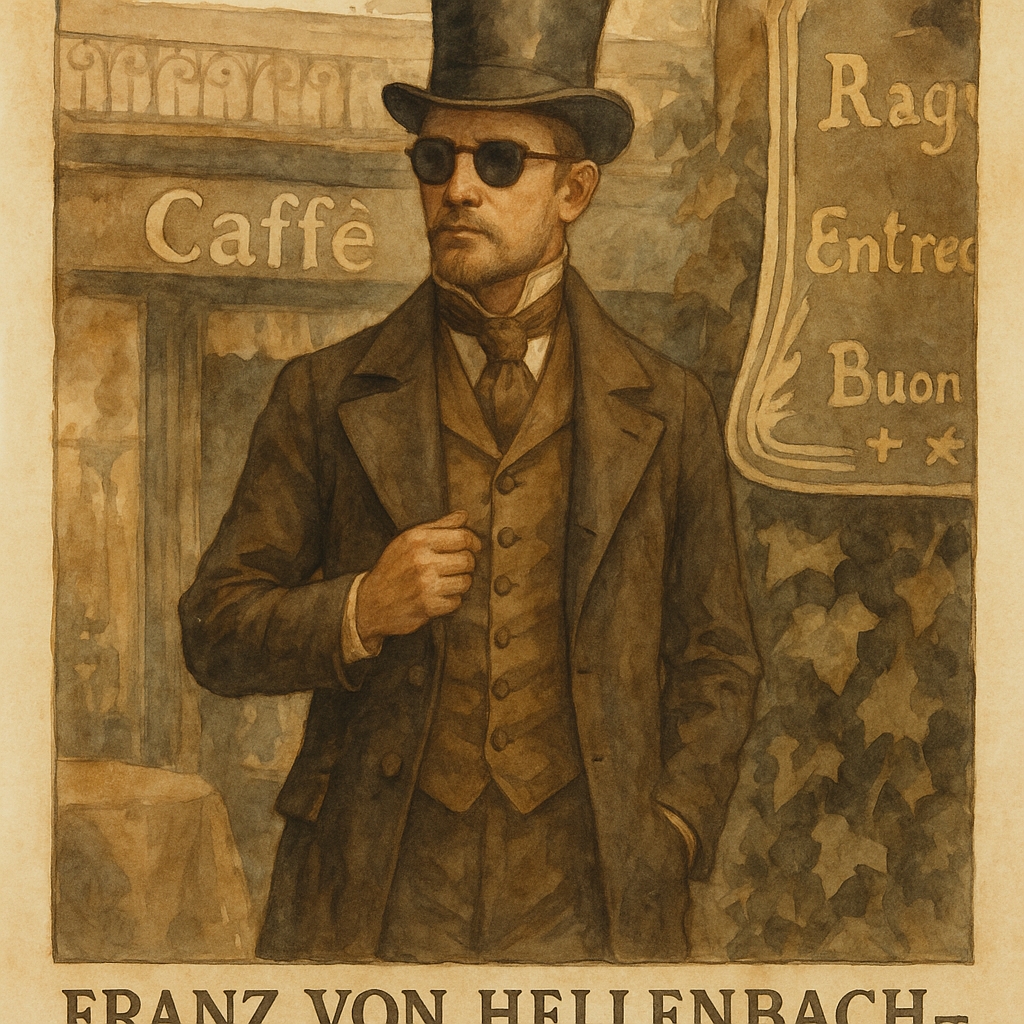
Self-Portrait at Café, Vienna (1868)
This self-portrait of Franz von Hellenbach is perhaps the most enigmatic work in the collection. The artist depicts himself in formal 19th-century attire, yet the dark spectacles he wears were uncommon in his era. Most puzzling is the café setting, which contains elements that appear both of his time and strangely modern. Art historians have noted the confident pose and mysterious half-smile, suggesting a man with secrets or knowledge beyond his contemporaries. The juxtaposition of period-authentic details with seemingly anachronistic elements established a pattern that would continue throughout his works.
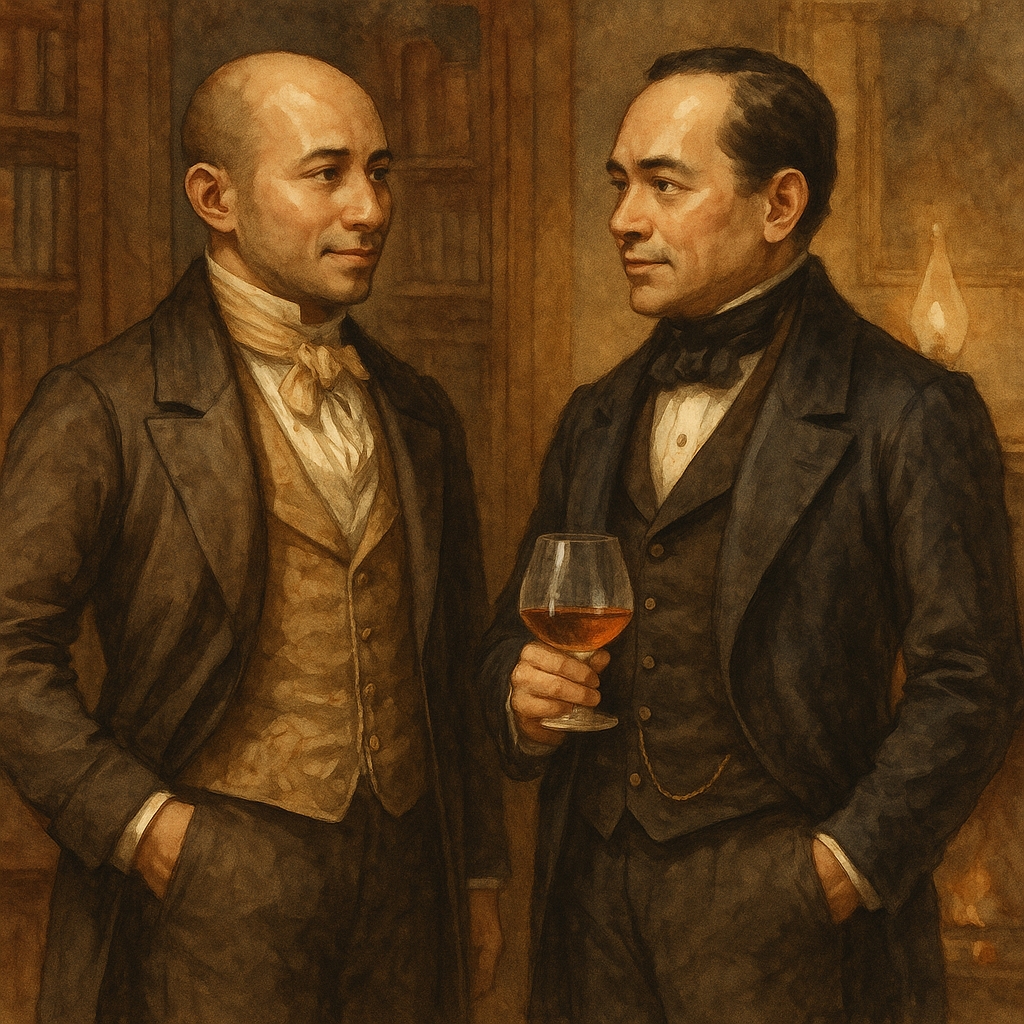
Distinguished Gentlemen of Manila Society (1880)
In this remarkable composition, von Hellenbach depicts two distinguished Filipino gentlemen engaged in conversation within what appears to be a luxurious private club. The painting is notable for its accurate portrayal of Filipino aristocracy of the era—men who would have been part of the ilustrado class—educated Filipinos who were gaining prominence in the late Spanish colonial period. What makes this work particularly noteworthy is von Hellenbach’s decision to place these subjects in positions of dignity and intellectual engagement, contrasting with many European depictions of colonial subjects from this era. The artist’s respect for his subjects suggests he moved among Manila’s elite society during his mysterious visits to the Philippines.
Manila Through Time: The Impossible Watercolors
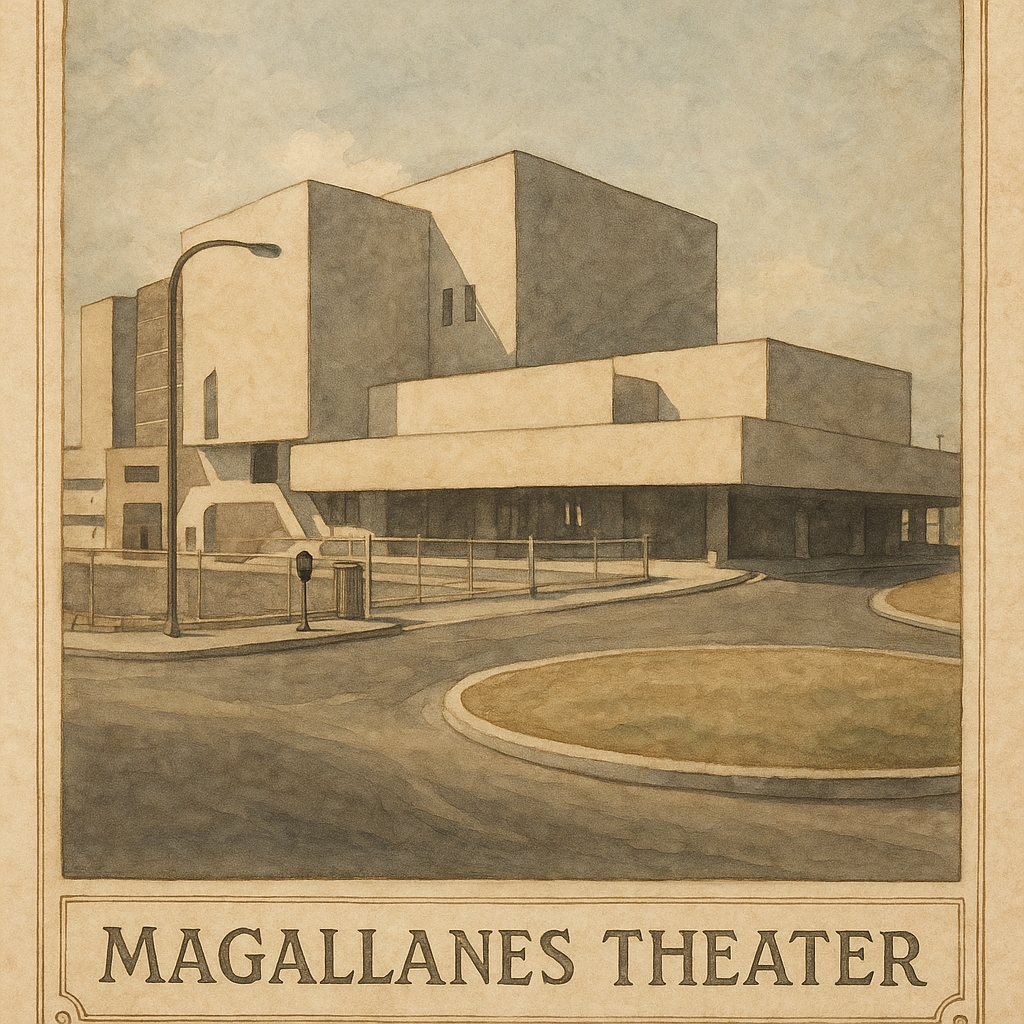
Magallanes Theater (1870)
This remarkable watercolor depicts the Magallanes Theater, a significant cultural landmark in Manila’s development. Von Hellenbach’s rendering of this modernist structure is extraordinary given that it would not be built until the late 1960s. The angular concrete forms and distinctive architectural style represent a complete departure from colonial-era buildings. The watercolor somehow captures both the structure’s future significance and the artist’s apparent foreknowledge of architectural trends that would not emerge for nearly a century.
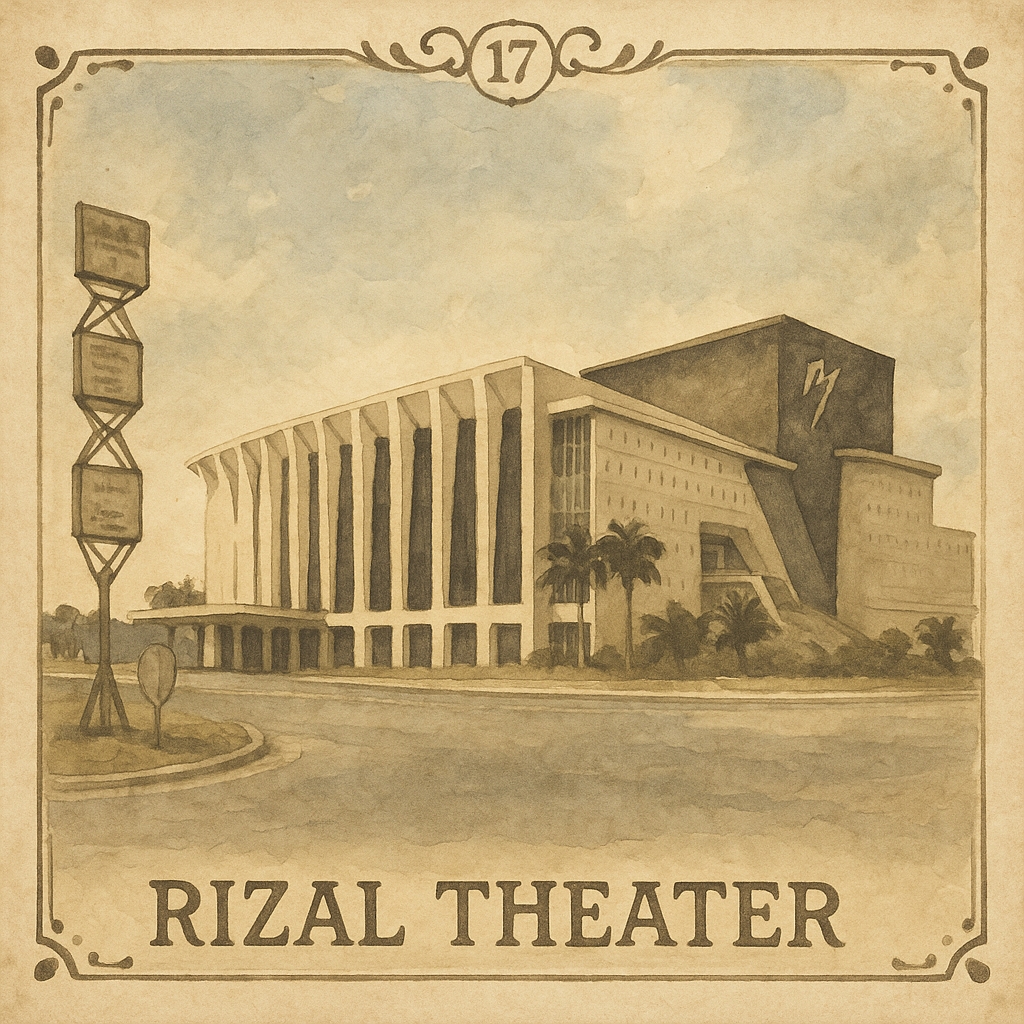
Rizal Theater at Sundown (1871)
This watercolor presents another chronological impossibility—a detailed rendering of the Rizal Theater, which would not be constructed until 1960, designed by National Artist Juan Nakpil. Von Hellenbach somehow anticipated this important cultural venue with its distinctive façade and modern lines, all set against a dramatic sunset that highlights its architectural features. Art scholars remain perplexed by how the artist could have depicted with such precision a building that would not exist for another 89 years after the date inscribed on the painting.
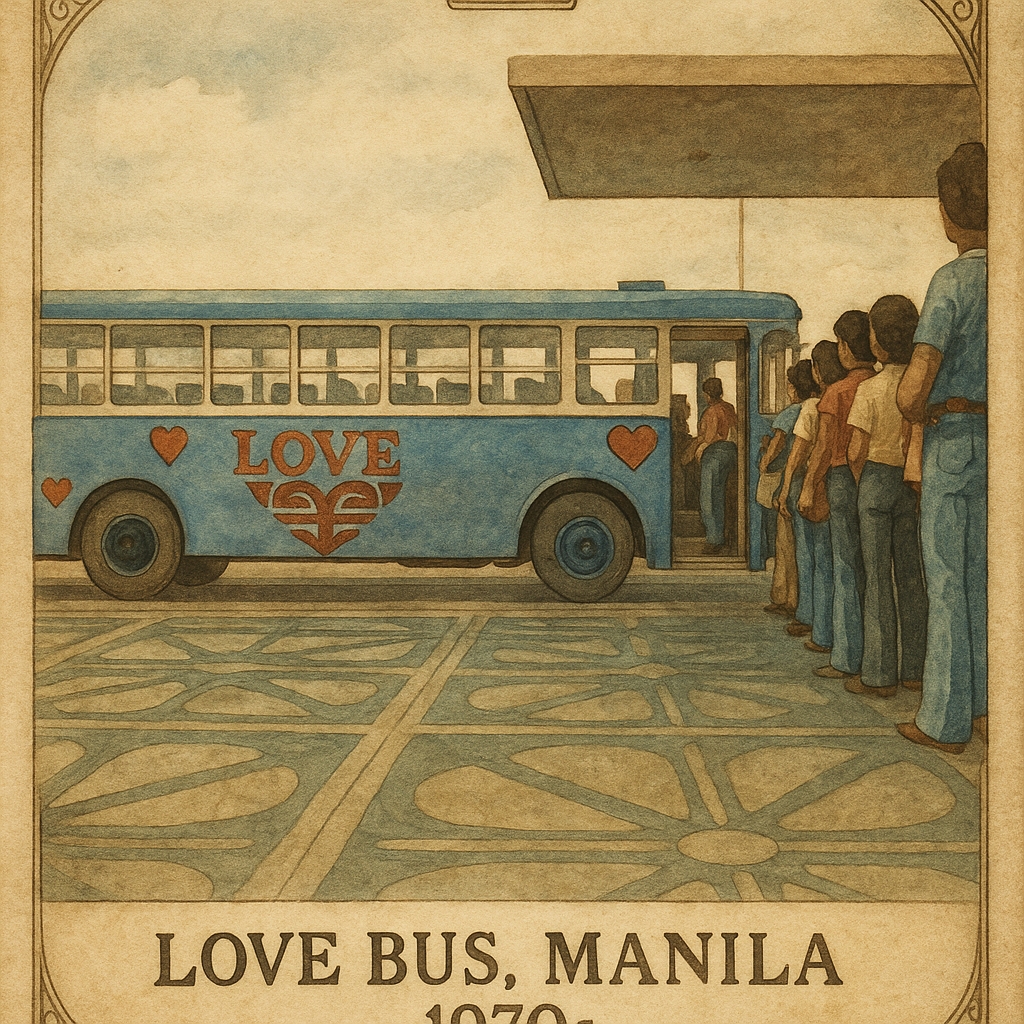
The Strange Carriages of Future Manila (1869)
Perhaps one of von Hellenbach’s most puzzling works, this watercolor depicts what appears to be a large blue omnibus with red heart decorations—identified by modern scholars as the iconic “Love Bus” that would not appear on Manila’s streets until 1974. The passengers in 1970s attire and the modern urban setting further confound explanation. In his journal, von Hellenbach described these as “horseless carriages powered by internal mechanisms and carrying many passengers in climate-controlled comfort”—a description impossible for someone from the 19th century unless they had witnessed such vehicles firsthand.
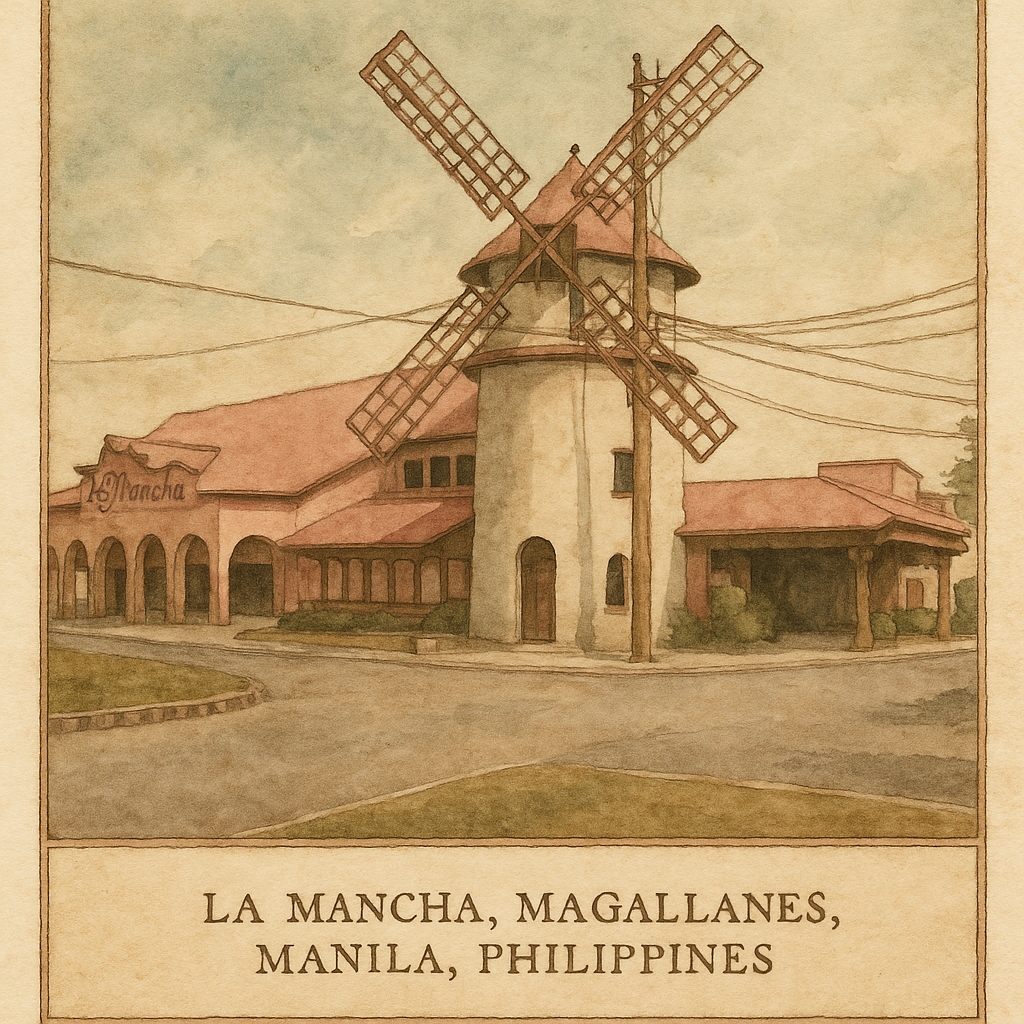
The Curious Windmill of Magallanes (1872)
Von Hellenbach titled this work “A Quixotic Establishment in the Manila of Tomorrow,” seemingly aware of the literary reference that would inspire the La Mancha restaurant depicted in his painting. The distinctive windmill structure, with its Spanish-influenced design, would not be built until 1975 as part of Chef Anastacio de Alba’s ambitious restaurant venture in the Magallanes Commercial Center. The artist’s journal entry accompanying this work notes “a curious establishment where future Manileños will dine on Spanish delicacies beneath a structure inspired by Cervantes’ windmills”—an uncanny prediction of both the building’s purpose and its cultural inspiration.
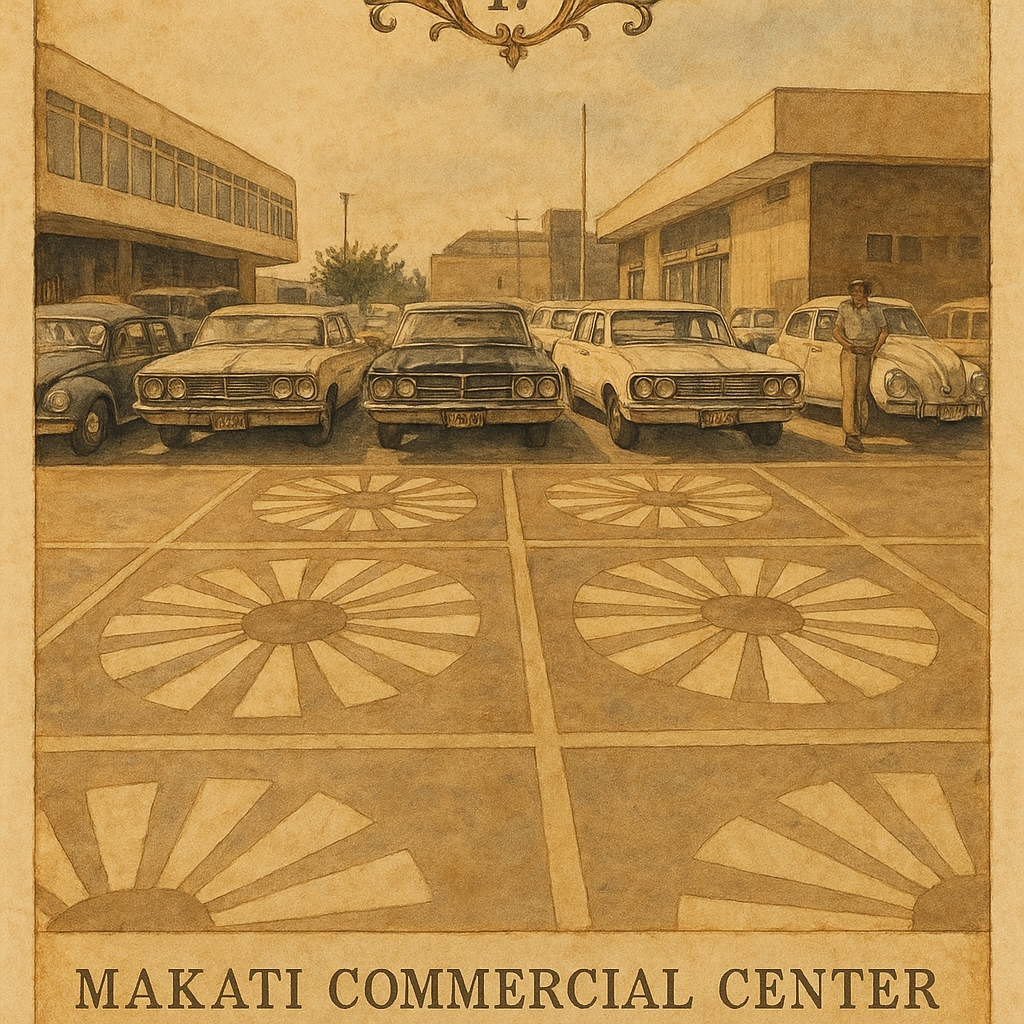
The Sunburst Plaza (1868)
One of von Hellenbach’s most puzzling works features what appears to be a parking area with distinctive sunburst patterns embedded in concrete. Most remarkable are the automobiles depicted, which bear no resemblance to carriages or early motor vehicles of his era. Art historians have puzzled over this work for decades, with some suggesting it represents a fantastical vision of the future or perhaps an interpretation of a dream. Only in recent years has it become clear that von Hellenbach somehow depicted with perfect accuracy the Makati Commercial Center parking area of the 1960s, complete with period-appropriate vehicles.
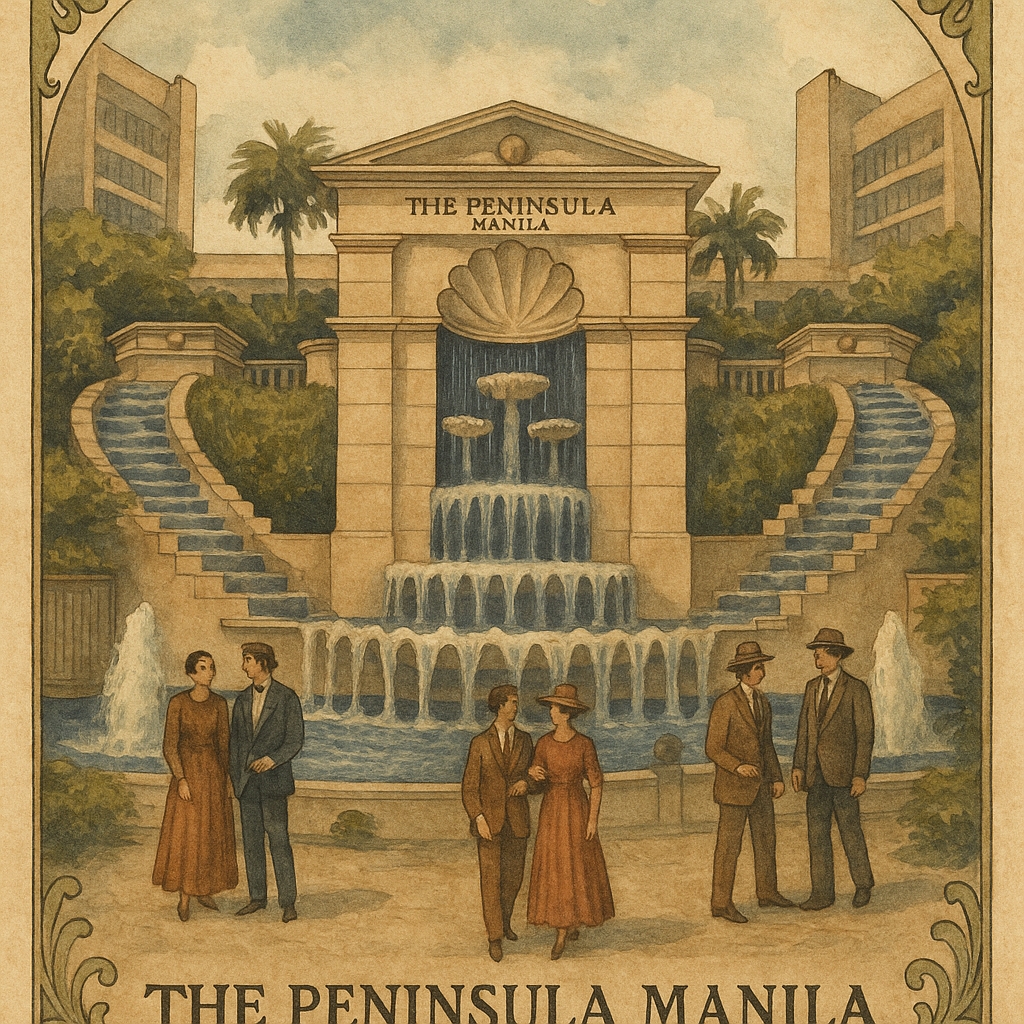
The Grand Fountains of Future Manila (1873)
This watercolor defies conventional explanation, as it depicts with remarkable accuracy The Peninsula Manila hotel, which would not be constructed until 1976, nearly a century after von Hellenbach’s presumed lifetime. The distinctive fountain features in the foreground and the modernist architecture of the building are rendered with such precision that scholars initially suspected this was a forgery from the late 20th century. However, pigment analysis and paper dating confirm this is indeed consistent with von Hellenbach’s other works from the 1880s.
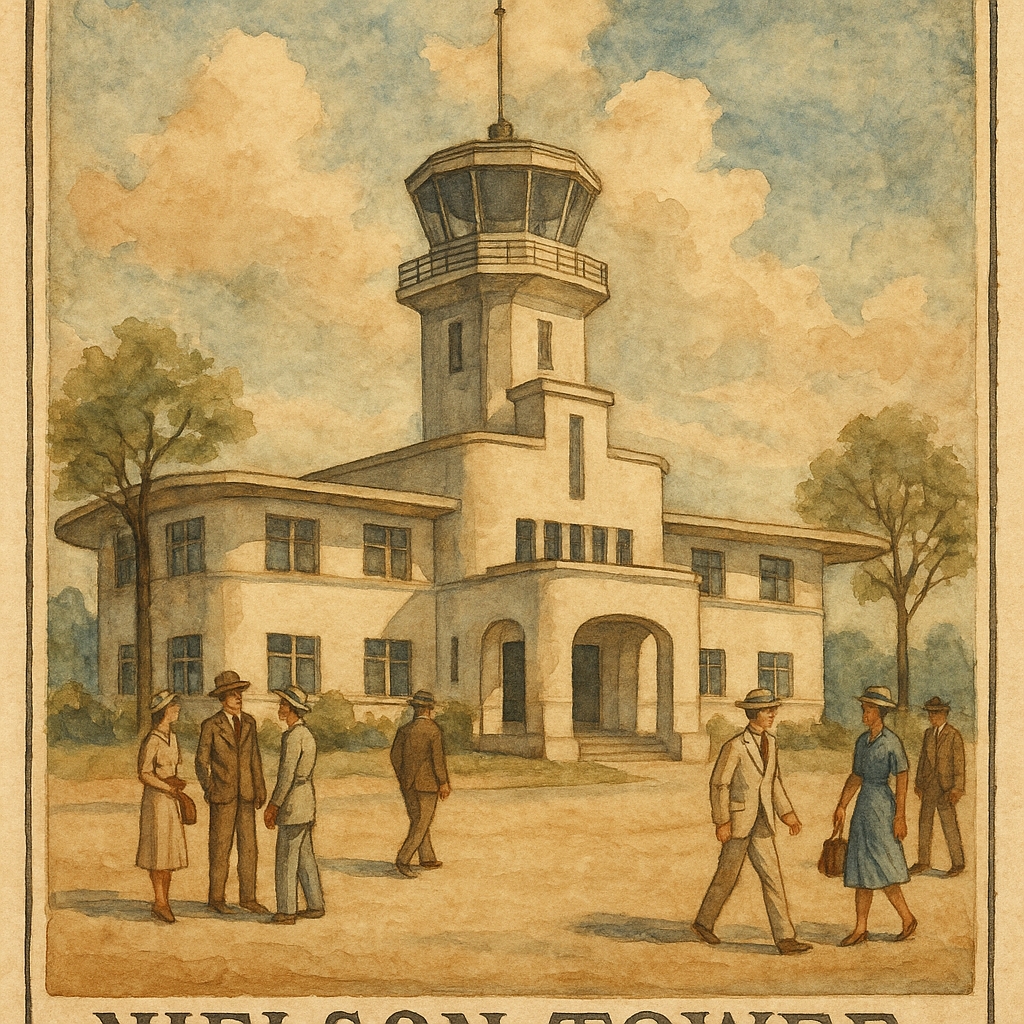
Strange New Architecture of the Air Age (1870)
Perhaps the most enigmatic of von Hellenbach’s ‘future visions’ is this detailed watercolor of the Nielson Tower. Built in 1937 as the control tower and passenger terminal of Manila’s first commercial airport, this structure would not exist until decades after the artist’s death. The meticulous attention to architectural detail, including elements that would not become common until the 20th century, has led some art historians to suggest von Hellenbach possessed an almost supernatural ability to visualize future developments.
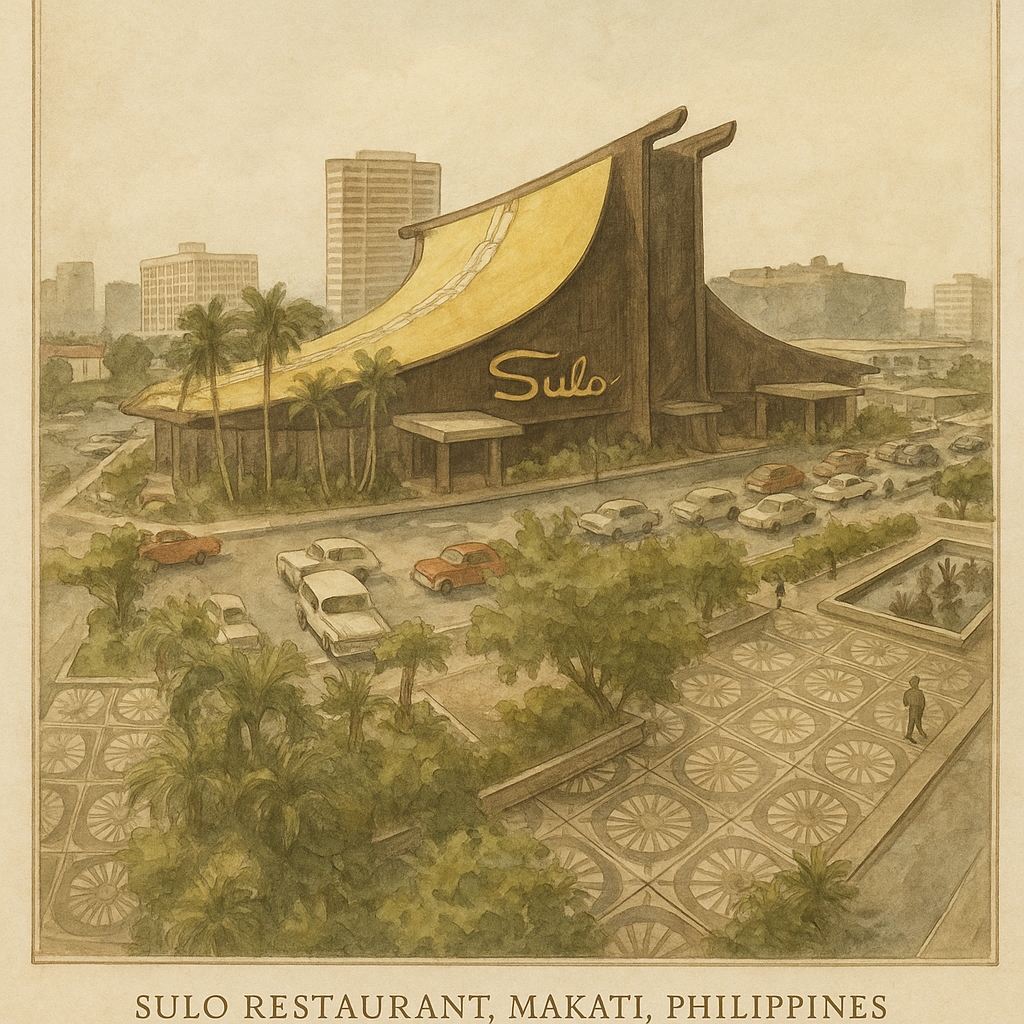
The Yellow-Sailed Structure (1871)
In this fascinating watercolor, von Hellenbach depicts what would later become known as the Sulo Restaurant with its distinctive yellow sail-like roof. Completed in the 1970s and designed by the Mañosa Brothers, this building’s vinta-inspired architecture would become a landmark in Manila. Von Hellenbach’s journal entry for this painting cryptically notes: “A gathering place where Manileños of the future will dine beneath a roof that recalls the sailing vessels of the southern isles.” The accuracy with which he captured both the building’s distinctive design and its future purpose continues to defy conventional explanation.

Monument to a Heroine Yet Unrecognized (1869)
Von Hellenbach’s journal entry for this watercolor reads: “Today I witnessed a curious monument to a woman warrior astride her horse, celebrated by future generations though overlooked in my time.” Indeed, the Gabriela Silang monument depicted would not be created until 1971 by sculptor Jose M. Mendoza, and installed at what would become Ayala Avenue. The artist’s prediction of how future Filipinos would commemorate Gabriela Silang, who led a revolt against Spanish colonization in the 1760s, is particularly striking given that in von Hellenbach’s era, Silang was not widely celebrated as the national heroine she would later become.
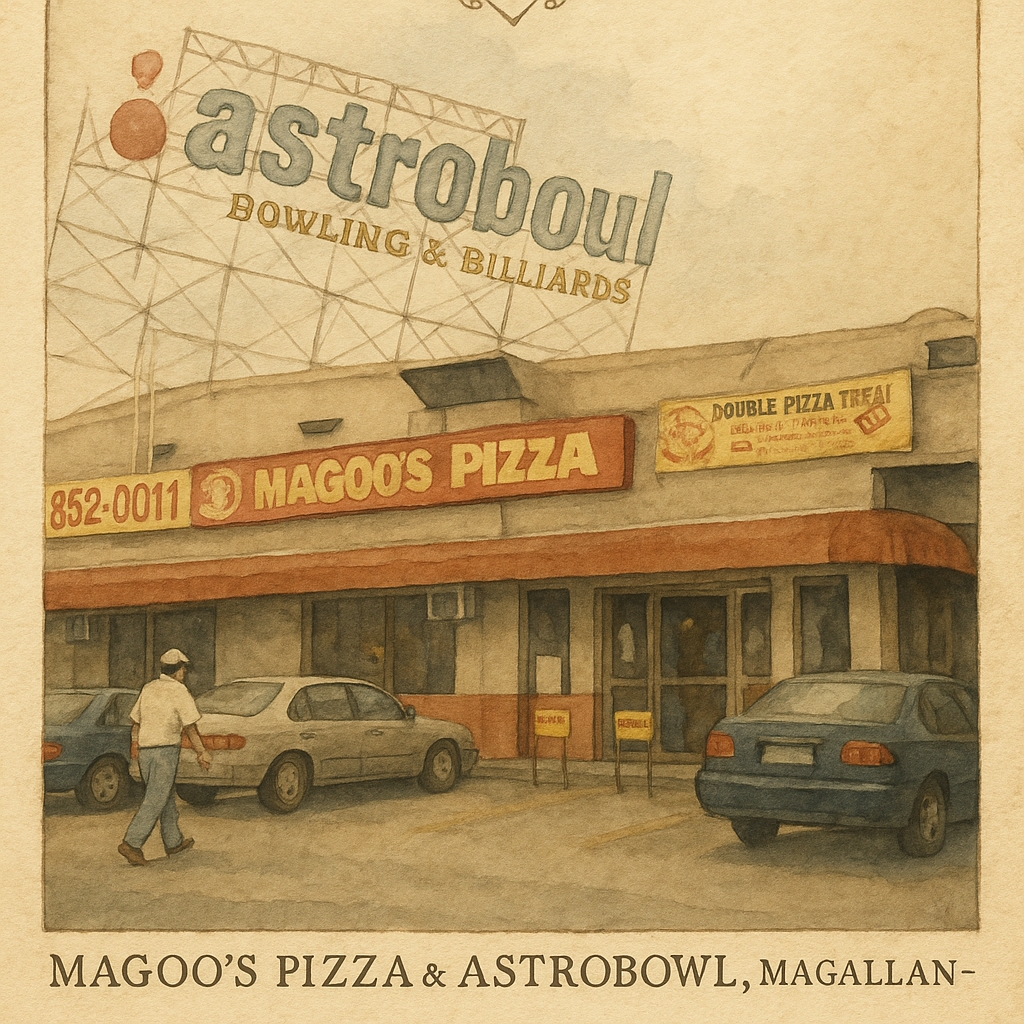
The Astral Game House (1872)
Perhaps the most whimsical of von Hellenbach’s futuristic visions is this depiction of what would eventually become Magoo’s Pizza and Astrobowl in Magallanes Village. His journal entry describes “an establishment where Manileños of the future gather to roll heavy balls at pins and consume flat bread covered with savory toppings.” The accuracy of his portrayal—down to the signage and architectural details of a facility that would not exist until the late 20th century—continues to confound explanation. Some scholars have suggested this particular painting represents evidence of von Hellenbach’s sense of humor and fascination with future recreational activities.
The Enduring Mystery
The discovered collection contains dozens more watercolors depicting various aspects of Manila’s future development, each meticulously dated between 1868 and 1873. While conventional academic wisdom continues to search for rational explanations for these works, a small but growing number of scholars have begun to entertain more extraordinary possibilities.
Perhaps most tantalizing are the fragments of von Hellenbach’s journal, which contain passages like this one dated June 12, 1871:
“The displacement occurred again today, more intensely than before. One moment I was sketching along the Pasig, the next I found myself on a broad avenue lined with structures of glass and steel, horseless carriages moving in ordered chaos, and the people dressed in the most curious fashions. I remained there for some hours before returning to my proper time. I work feverishly now to record what I have seen before the details fade from memory.”
What are we to make of such a testimony? Was von Hellenbach experiencing some form of hallucination or prophetic vision? Was he, as some theorists have boldly suggested, actually traveling through time? Or is there some more prosaic explanation that continues to elude us?
The watercolors themselves offer no definitive answers—only beautifully rendered windows into a Manila that their creator could not possibly have seen through ordinary means. They stand as an enduring mystery, challenging our understanding of art, history, and perhaps the very nature of time itself.
~ Dr. Maricel Santos, Curator of the von Hellenbach Collection